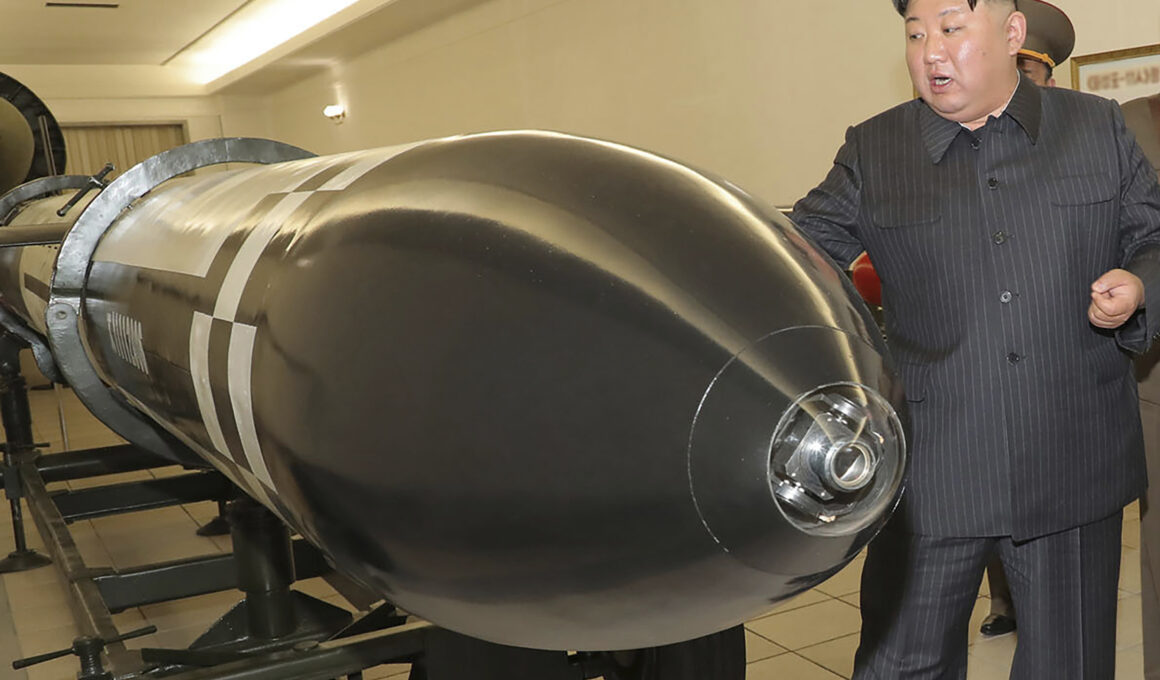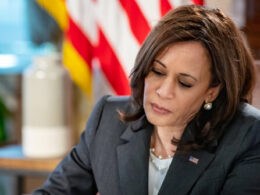North Korea appears to be upgrading its missile production capabilities, heightening concerns about the isolated state’s objectives amid escalating tensions with its southern neighbor.
Images uncovered by NK Pro show construction underway on several factories across the country, which have in the past produced transporter erector launcher vehicles, anti-tank guided missiles, and surface-to-air missile systems.
One of these is the Huichon Youth Electrical Complex in North Korea’s Chagang Province.
Their analysis of satellite images revealed that North Korea had started building a large new production hall at Huichon last April, after demolishing the old facility at the start of the year.
According to NK Pro, the factory produces Pongae “Lightning” missiles, and photos of a 2010 visit by former DPRK premier Kim Jong Il showed a fully assembled surface-to-air missile system in the background.
Other upgraded factories identified by NK Pro include the Pyeonghwa Motors General Factory, believed to produce rocket launch vehicles, and the Sinhung Machine Factory, a warhead production facility where ground was cleared in March in preparation for construction works.

Efforts to boost production of its military capabilities align with North Korea’s increasingly aggressive posturing, which has drawn the ire of its southern neighbor.
Sang Hun Seok is a visiting fellow at the Royal United Services Institute, who previously worked as a diplomat for South Korea’s foreign service.
He spoke to Newsweek about the factory upgrades, which he termed “a continuation of North Korea’s constant efforts to maintain and increase its weapons production capability.”
“The North has never given up its intention to take a hostile stance toward the United States and South Korea, as it forms part of its raison d’être,” Sang Hun said. “As rightly pointed out by the NK Pro report, weapon systems such as MLRS, TEL, and anti-air missiles all constitute very relevant assets against a potential conflict with the United States and South Korea.”
He added that North Korea’s cooperation with Russia served as “an encouragement and an enabling factor in bolstering Kim Jong-un’s confidence in North Korea’s weapons industry.”
Moscow-Pyongyang ties have strengthened over the past few years, with the leaders of the two countries signing a “Treaty on C omprehensive Strategic Partnership” in mid-June.

NK Pro‘s analysis comes after a series of aggressive actions and statements from the DPRK.
In early July, according to South Korean military leaders, two short-range missiles were launched from North Korea’s Jangyon County, with one reportedly landing near the nation’s capital, Pyongyang.
During a visit to the U.S. Indo-Pacific Command in Hawaii, South Korean President Yoon Suk Yeol advocated further joint defense training between his country and the U.S. in response to ” North Korea’s evolving nuclear and missile capabilities and continued provocations.”
The two countries, alongside Japan, recently participated in joint naval exercises in the South China Sea, aimed at enhancing their readiness against threats from North Korea.
The country has issued several warnings in response to these “war games,” which one North Korean paper said had “boldly crossed the red line of a new nuclear world war.”
The last few weeks have also seen tensions rising at the inter-Korean border.
In June, South Korea’s Joint Chiefs of Staff claimed that North Korea had begun erecting anti-tank barricades along the border’s demilitarized zone, viewed by some as Pyongyang preparing for a military confrontation.
The pair have also been engaged in an exchange of propaganda and trash balloons, one of which landed in South Korea’s presidential compound in Seoul on Wednesday.
South Korea has also claimed that Kim Jong Un had ordered his military to lay mines along the demilitarized zone, resulting in “multiple” North Korean casualties.
In an interview with Japanese newspaper Yomiuri Shimbun, retired South Korean lieutenant and former vice chair of the Joint Chiefs of Staff Shin Won-sik suggested that the border disputes could descend into an armed confrontation between the two countries.
However, Sang Hun said that the likelihood of a full-scale attack by North Korea appeared unlikely.
If its forces were preparing for a “surprise attack,” which he said would be necessary given their relative strength compared to the South, Sang Hun said that the country “would shift into dialogue mode,” to lower the expectations of a confrontation.
“Given the current situation, where tensions are relatively high and the South and the United States are alarmed and well-prepared, I think the chances of an armed conflict are low, ironically.”
Do you have a story we should be covering? Do you have any questions about this article? Contact LiveNews@newsweek.com.
Uncommon Knowledge
Newsweek is committed to challenging conventional wisdom and finding connections in the search for common ground.
Newsweek is committed to challenging conventional wisdom and finding connections in the search for common ground.








